Basics of Prism
Prism can feel intimidating, but it’s really the foundation of everything we do. After all, optics is all about bending light, and that’s exactly what a prism does.
This page will cover the basics of prism. If you’re ready to go deeper, we have troubleshooting prism guides for when you want to get nerdy.
What Is a Prism?
At its simplest, a prism bends (or redirects) light. Light goes in, splits and exits at a different angle. That’s a prism at work.
When it comes to eyeglasses, we focus on refracting prisms. These bend light by refraction, not reflection.
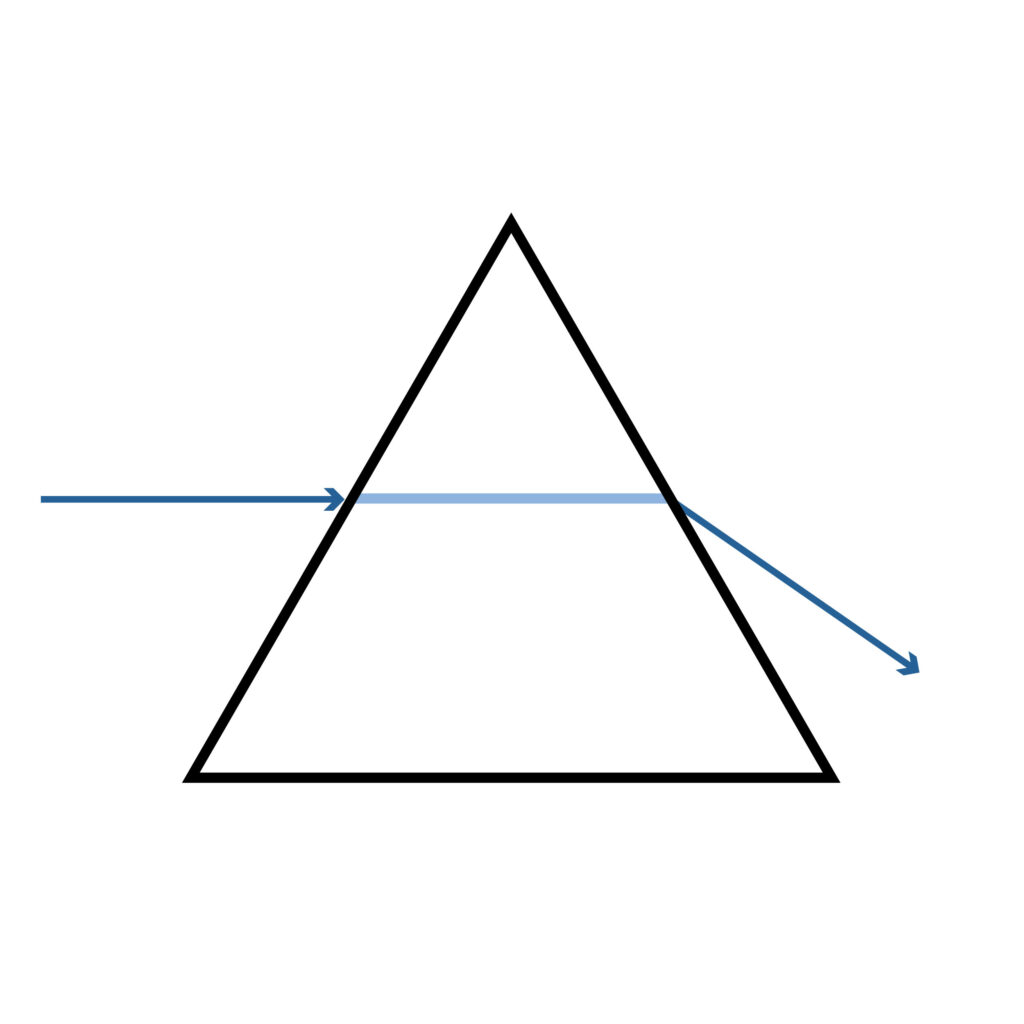
Reflection vs. Refraction
Prisms can also reflect light (reflective prisms). Think of binoculars and periscopes, where light bounces inside the prism to change direction by 90 degrees or more.
But in everyday glasses, we only care about refraction - bending light to a different path.
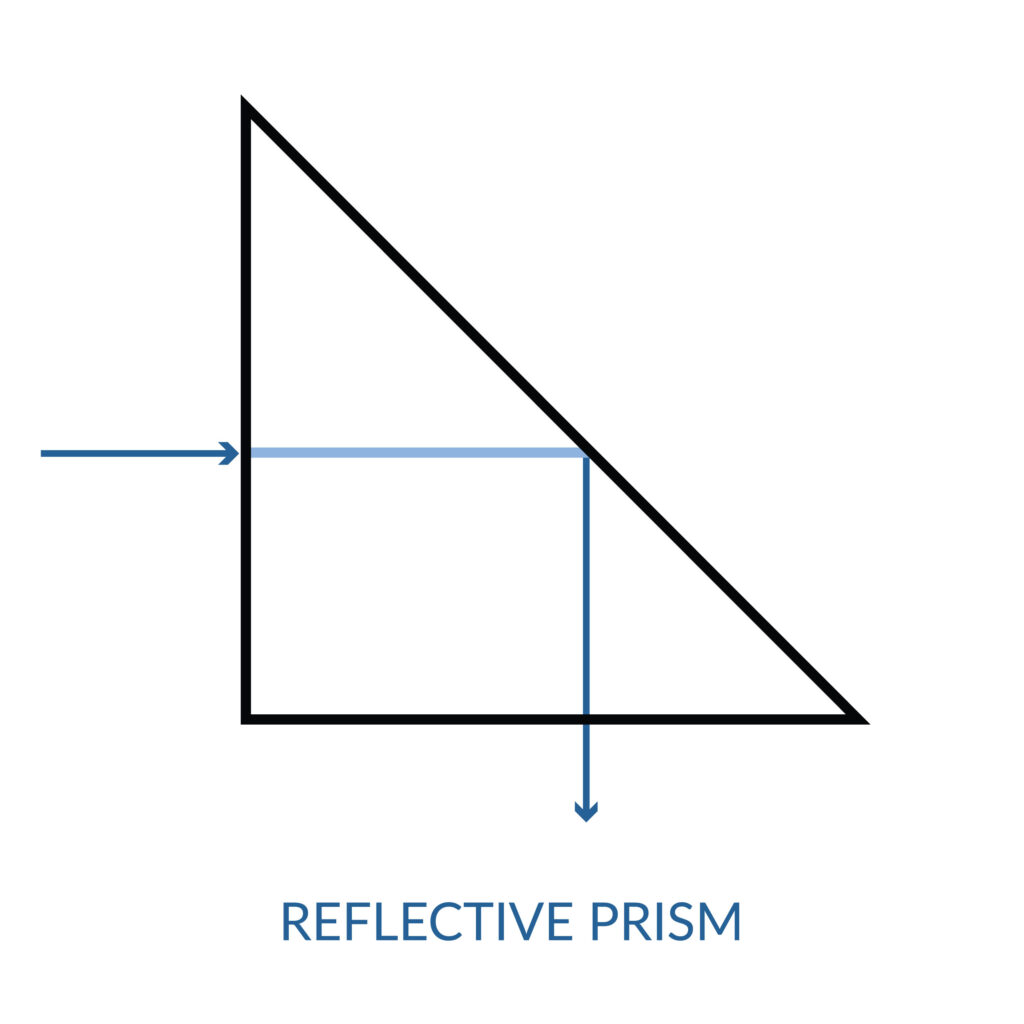
How Prism and Lens Power Work Together
Here’s where things get tricky (and where people’s brains start to melt): Prism and lens power are linked.
Every lens with power has a focal length. For example, a +4 diopter lens has a focal length of 25 centimeters. Light rays enter, bend, and focus at that point. (A -4 diopter lens has a negative focal length, but let's not worry about that right now)
If you want to measure the amount of prism at a specific point in the lens, you use Prentice’s Rule:
distance (cm) × lens power (diopters) = Prism (in prism diopters)
If you move away from the lens center, you automatically create prism. The further off-center you go, the more the light bends.
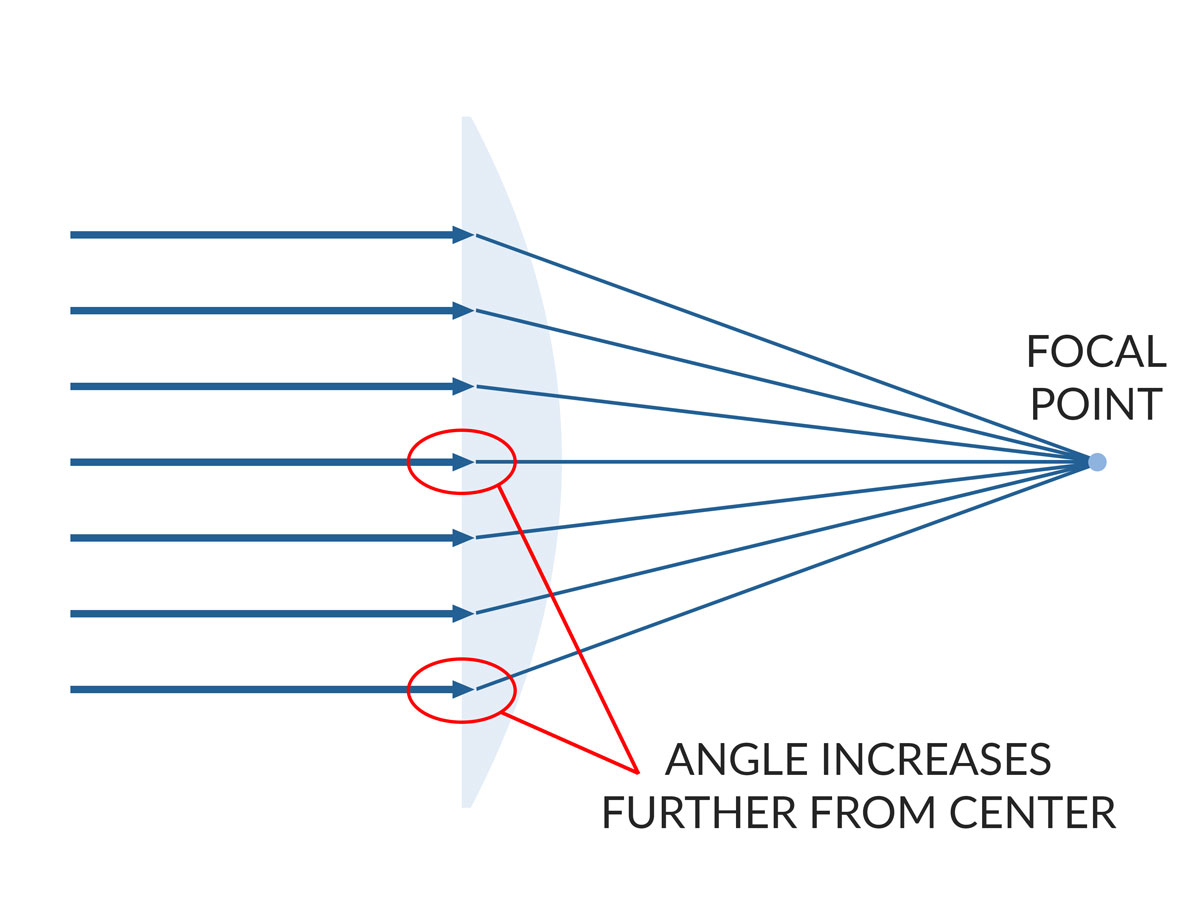
Prism Diopters vs. Lens Diopters
A power diopter focuses light to a point (1 diopter focuses at 1 meter).
A prism diopter shifts light 1 centimeter at 1 meter.
Same units, different jobs.
The Anatomy of a Prism
A prism has two parts:
- Apex: the pointy end.
- Base: the thick end.
When prescribing prism, you’ll use:
- Base In: towards your nose.
- Base Out: towards your ears.
- Base Up: towards your forehead.
- Base Down: towards your chin.
Sometimes, it’s also described in degrees to show the exact angle.
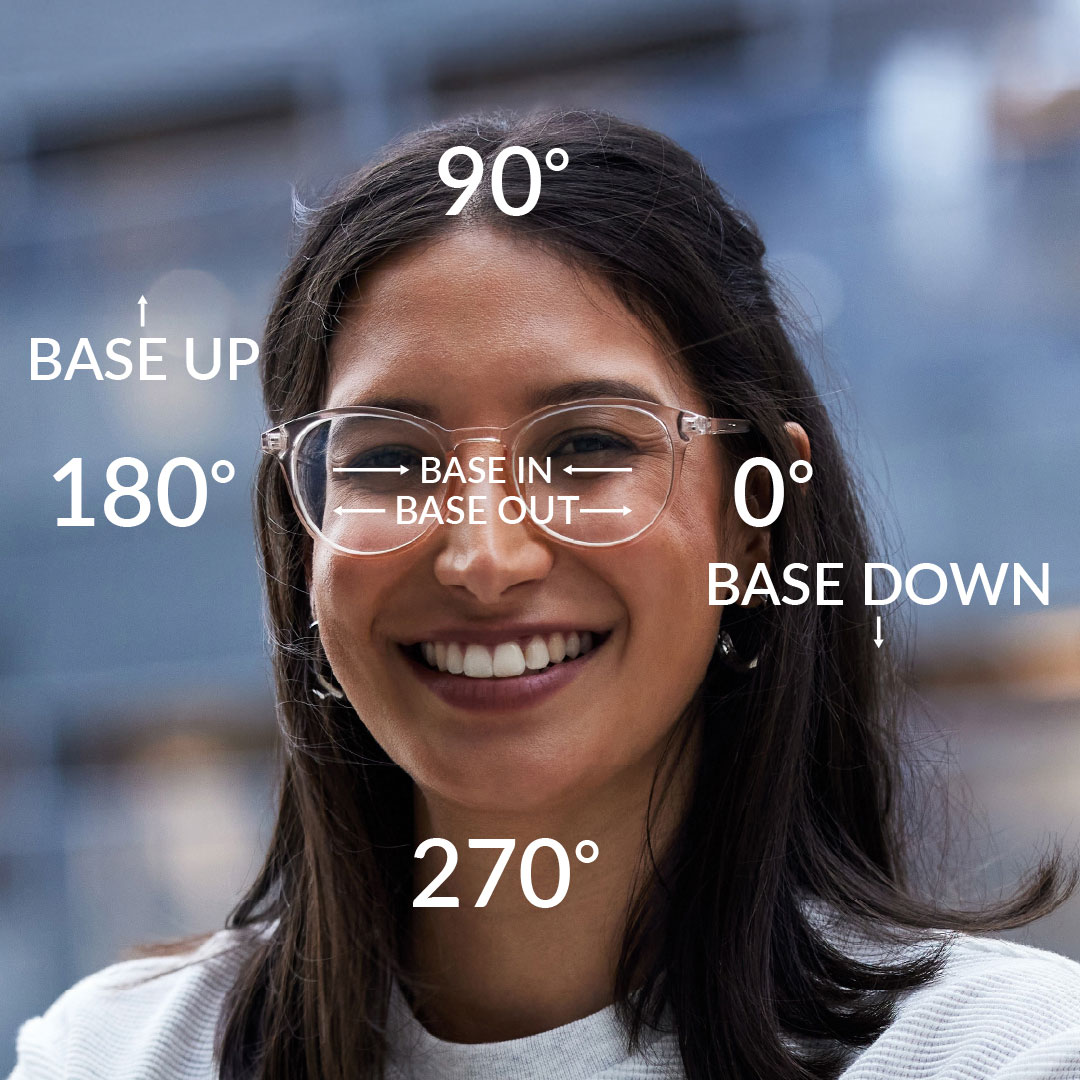
Why Prism Matters in Eyeglasses
Prism is used when your eyes don’t naturally align perfectly:
- Base In Prism helps with convergence insufficiency - when your eyes struggle to turn inward for close work (like reading or screens).
- Base Out Prism can help when eyes turn inward too much.
- Base Up or Base Down Prism fixes vertical misalignment - your eyes don’t sit perfectly level, which can cause double vision or neck strain from constant head tilting.
Vergence Ranges: Your Eye Muscles at Work
Your eyes are really good at compensating for horizontal misalignment - that’s why horizontal prism is less common.
But they’re bad at fixing vertical misalignment on their own. Even a small difference can lead to posture problems or chronic neck pain if untreated.
Yoked Prism: Special Purpose
Most prism prescriptions balance your two eyes. Yoked prism is different - it shifts the entire visual field in one direction.
It’s often used in neuro-optometry for stroke or traumatic brain injury patients to help realign vision with body balance and movement.
Splitting Prism: Making Glasses Wearable
You may find some situations where splitting the prism makes sense - like when one eye needs a large prism correction. In those cases, putting the prism all in one lens can make it:
- Heavy
- Thick
- Hard to wear
Instead, you can split the prism to share it equally between both lenses for comfort and balance.
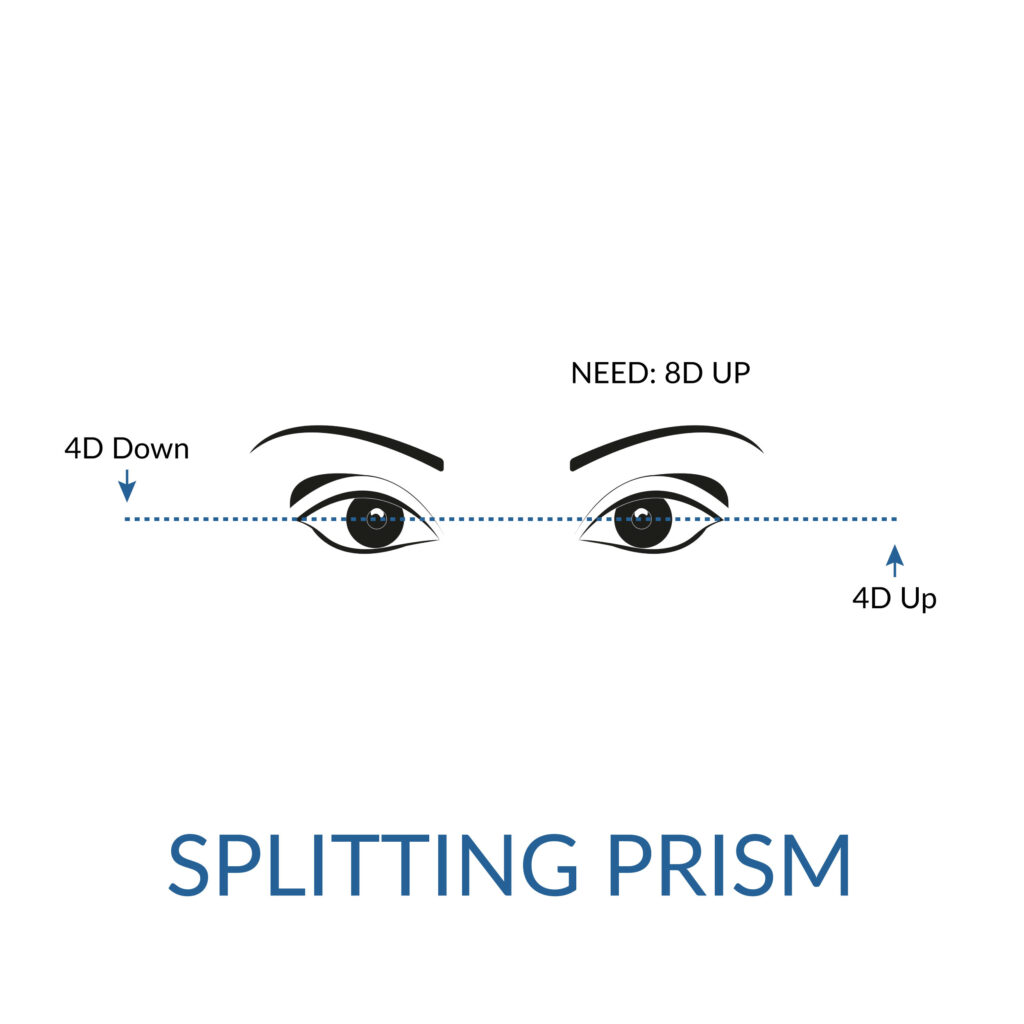
Why Prism Is So Powerful
In the end, prism is a tool. It doesn’t just bend light, it helps your eyes and brain work together when they can’t do it alone.
When prescribed properly, prism can reduce double vision, headaches, posture problems and more - changing everyday life for the better.
